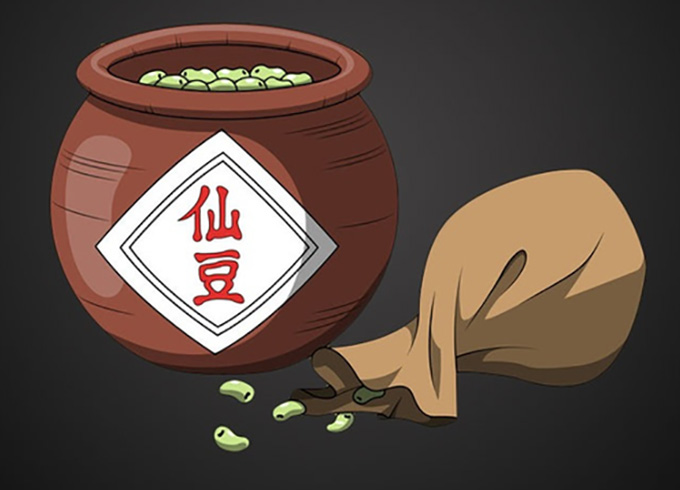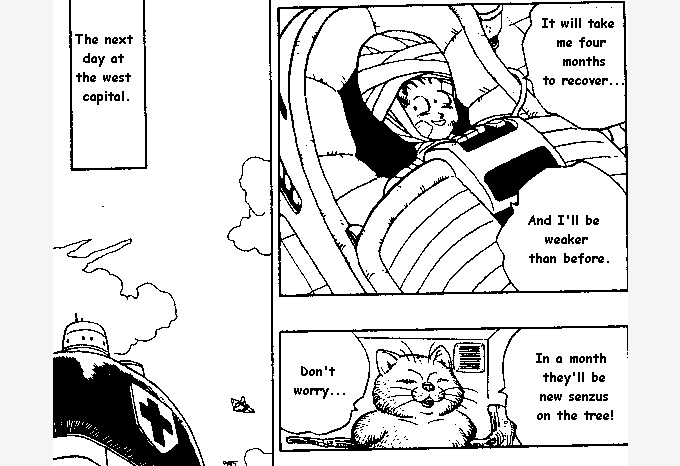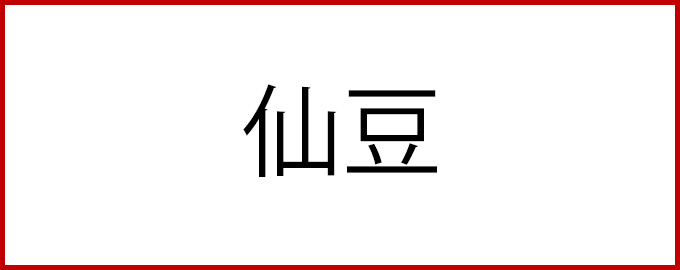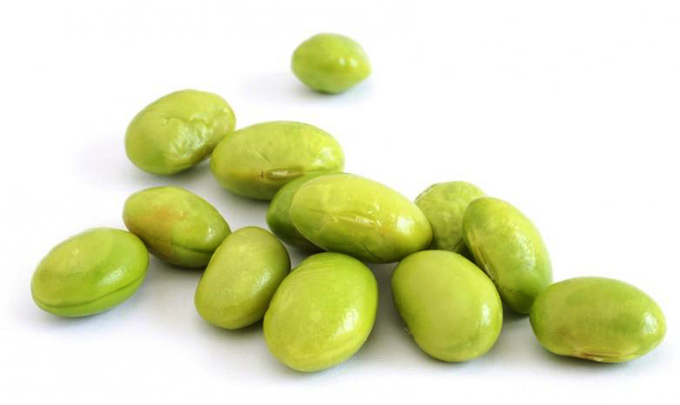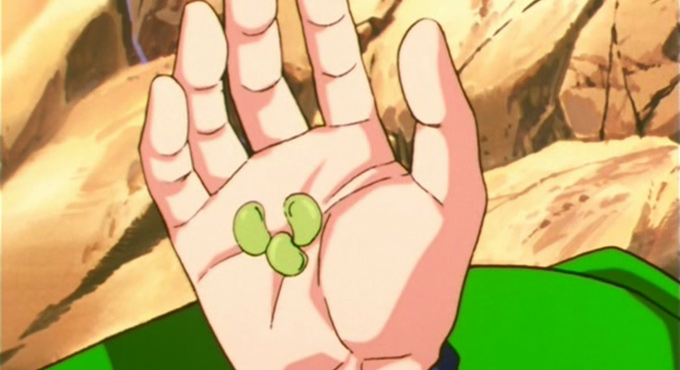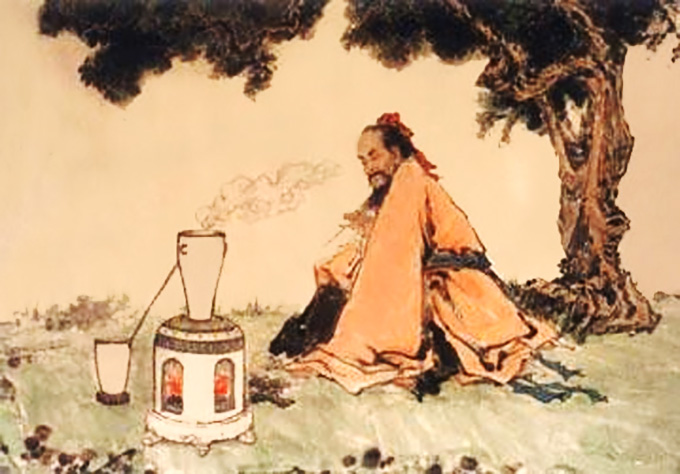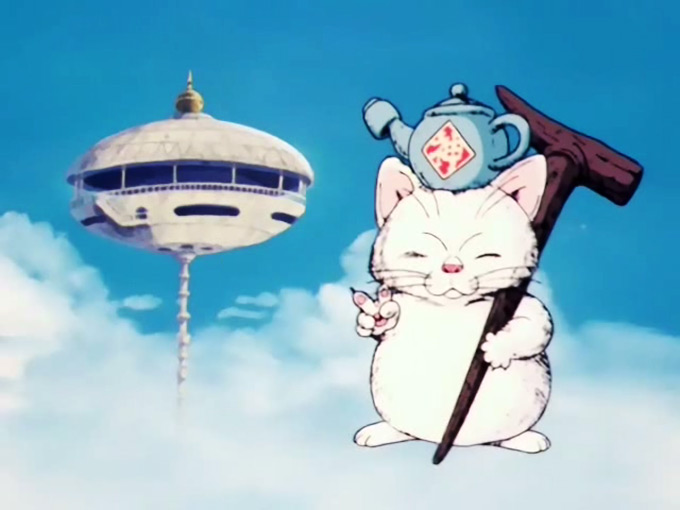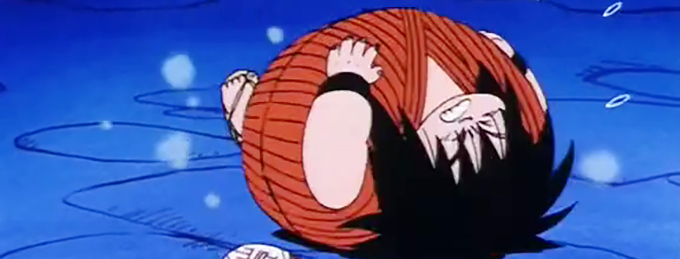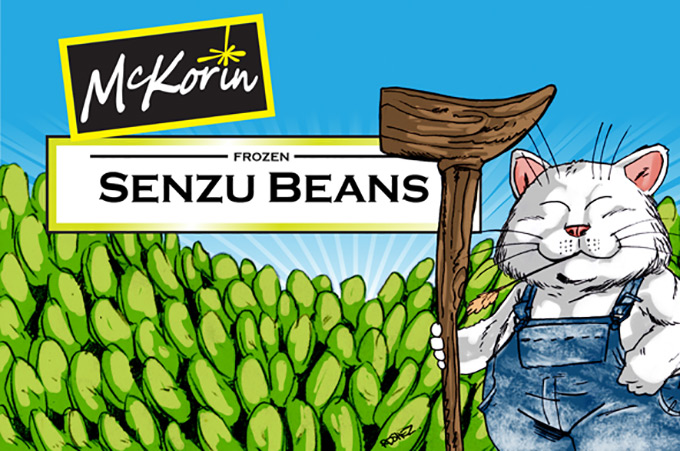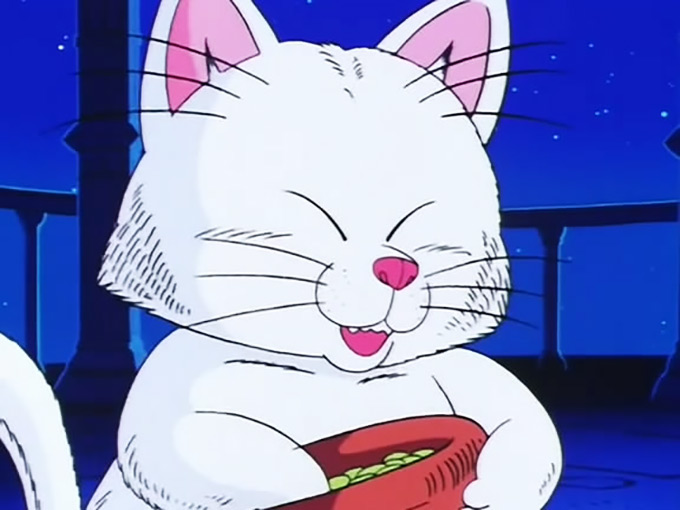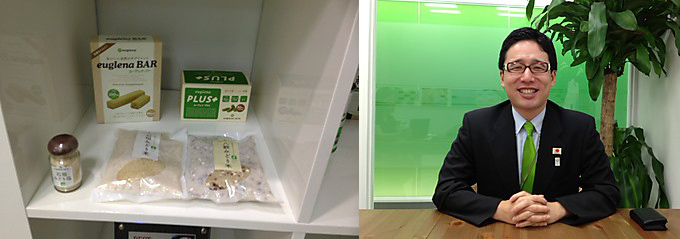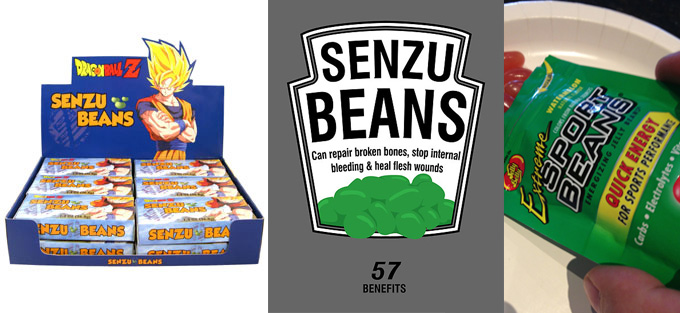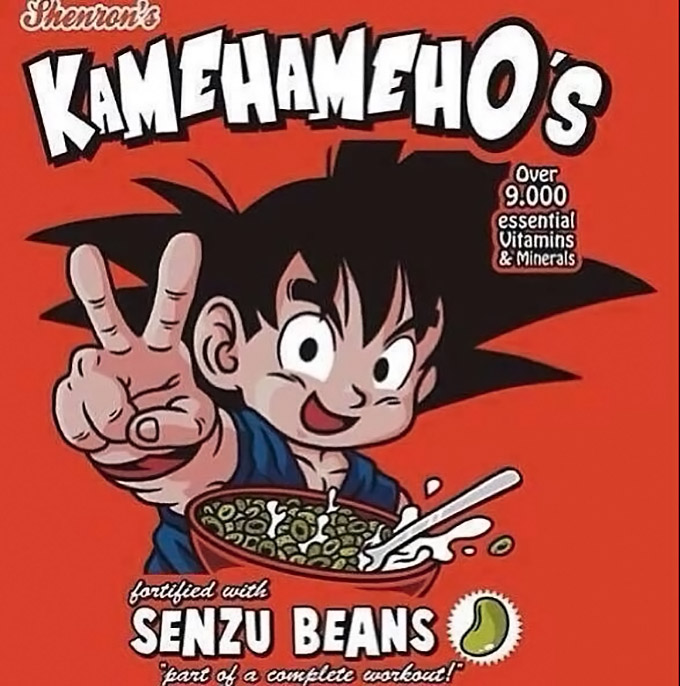Senzu Explained
Senzu, the magical beans that save lives. Think you know what they’re all about?
Well, think again.
What are Senzu?
Senzu are magical beans that restore the vitality of any person that eats one. They also eliminate injuries and can keep a man full for 10 days.
Senzu are used to recover from near death injuries. For example, when Gohan has his neck broken by Recoome on Namek, and Krillin has his spine broken, Goku gives both of them a senzu and they recover immediately.
They’re also used to speed up the healing process. For example, when Goku is in Wukong hospital after defeating Vegeta, he says the medical staff told him it will take 4 months to recover. But with the help of a senzu he recovers in an instant.
It doesn’t matter how vast a persons energy reserves are, a single senzu does the trick. Other methods, such as Dende and Kibito’s energy healing, require a bit more time and effort.
Senzu are also valuable training tools for warriors who exhaust their bodies in extreme ways, as they help them recover from exhaustion. While Goku is on board the Capsule Corporation Spaceship on his way to Namek he uses the senzu to immediately restore his vitality and continue his intense training in increased gravity. He does this several times in a row. Without the senzu he could not have increased his power level so quickly.
Their only limitation is that they cannot cure diseases, such as Goku’s heart virus, nor can they erase scars or wounds that have already healed naturally, such as the scars on Yamcha’s face, Future Gohan’s missing arm, or a Saiya-jins severed tail.
Nevertheless, the senzu are highly regarded by all of the Z-Warriors as life savers.
That’s the stuff that most people know. Now let’s get into the deep stuff.
The Etymology of Senzu
Senzu is written in Japanese kanji as 仙豆. The kanji are inherited from Chinese and carry the full meaning of their traditional Chinese culture.
The first character, sen (仙) consists of two parts, a stylized, upright nin (人) character that means “man,” and yama (山), meaning “mountain.” The two characters together mean “mountain man,” “hermit,” or “ascetic.”
The second character, zu (豆) consists of three parts. On top is ichi (一), which means “one.” In the middle is kuchi (口), which means “mouth,” and on the bottom is nijū (廿), which is an ancient way of writing “twenty.” My guess is that the original character implied “twenty in one mouth.” Nowadays zu means “beans” or “peas.”
So senzu means “hermit beans.”
Saying ‘senzu beans’ is redundant, because zu (豆) already means “beans,” so you’re really saying senzu beans beans. That is why it’s more proper to just say senzu.
Appearance and Texture of Senzu
Senzu resemble green lima beans in shape and appearance.
They are about the size of a small coin, and Goku often carries several of them around in his cloth bag.
They can also be broken in half and when eaten in the anime they have a crunchy sound, which implies they have a hard texture.
Regarding the taste of senzu, I read that somewhere in the Japanese dub Krillin says they taste bitter. In the FUNimation dub Yajirobe says they taste like fish, which is most likely wrong. If you remember anything about their taste, please tell me in the comments.
The Origin of Senzu
http://youtu.be/3BD32rqPoHM
So where do these magic Hermit Beans come from?
Like almost everything else in Dragon Ball, they’re inspired by Daoist culture.
The sen (仙) in senzu is shorthand for “sennin” (仙人), derived from the original Chinese term xiānrén (仙人).
Sennin was the term used to describe men who dedicated themselves to following the Dao (道). They left society in order to cultivate their character, ascend to great heights, and become immortal, True Men (Chinese: zhēnrén, 真人). They did not have ordinary minds and did not live according to society’s rules, and this is why they could achieve incredible feats.
The sennin were believed capable of flying through the air, riding clouds, transforming into mist, or riding on the back of animals such as dragons, turtles, and fish.
Hermits play a large role in Dragon Ball, as all of Goku’s teachers are hermits or ascetics. For example, Grandpa Gohan lives by himself on Mt. Paozu, while Kame Sennin lives by himself on Kame Island, and so on. They are hermetic martial arts masters with incredible powers, and Goku trains with these sennin his entire life.
In China these sennin masters would teach their disciples how to cultivate.
“Cultivation” is the English translation of the Japanese shugyo (修行) and Chinese xiūliàn (修练), which means “to refine yourself” or do “austere training.”
Through special physical exercises, breathing methods, and meditation, you cultivate yourself just as you would cultivate plants, growing higher and producing “fruits” or “seeds.”
The sennin and Daoist monks that later codified their teachings referred to this as Internal Alchemy, nèidān (內丹).
In addition to Internal Alchemy, sennin were famous for their practice of External Alchemy, wàidān (外丹): creating magical pills of immortality and elixirs that granted supernormal abilities.
The concept of “seeds” (Chinese: zhǒngzǐ, 种子) is important in Daoism. The master places “seeds” within the practitioners’ body. They ingest external “seeds” of herbal and metallurgical alchemical concoctions in order to elicit internal responses and produce “fruits,” such as supernormal powers, immortality, or enlightenment.
Senzu are beans, but in this sense they’re also seeds.
Cultural Parallels
There is a parallel to senzu found in Buddhism called amrita (Sanskrit: अमृत), which means “nectar of immortality.”
Rituals are performed in Esoteric Tibetan Buddhism where great Buddhist masters make a plea to the paradises and heavenly realms where Buddha’s and Bodhisattva’s reside in order to receive a divine substance. If the plea is honored, a bowl at the center of the altar will be filled with a miraculous material born from emptiness.
The nectar is gathered and formed into pills. When eaten, the nectar cures any wound or illness within a matter of minutes.
This amrita has similarities to the Greek ambrosia (ἀμβροσία), which was considered the drink of the gods that conferred immortality.
Similarly in Zoroastrian and Hindu Vedic texts there is a pill or drink called sóma (Sanskrit: सोम), extracted from a plant. In the Rigveda it says, “We have drunk sóma and become immortal; we have attained the light that the Gods discovered. Now what malice may do harm to us?”
Because of this syncretism across cultures my guess is that the idea of divine immortality pills and food came from the Middle East and then spread to North India and Greece, where it then spread to China with the exportation of Buddhism that was syncretized into Daoism.
Daoist External Alchemy – Pills of Immortality
Ge Hong, a 4th century Daoist alchemist, stated that, “Those seeking immortality must perfect the absolute essentials. These consist of treasuring the jing, circulating the qi and consuming the great medicine.”
This great medicine of pills and elixirs were melted together in a crucible using ingredients such as gold, mercury, and rare herbs and mushrooms they found in the mountains. The practitioners believed these plants and elements were magical.
For example, the “divine mushroom of immortality” was a name given to the fly-agaric mushroom, a psychoactive mushroom that was highly poisonous yet produced powerful mind altering states, such as feeling like you are flying or are impervious to harm.
Each particular ingredient possessed various amounts of yīn (陰) and yáng (陽) energy, and by mixing the ingredients together in just the right fashion the hermit could concoct a potion or pill that would balance the yīn and yáng in their own bodies with the hopes that it would increase their life span, eliminate illness, or confer immortality.
Daoist concoctions were often deadly. Incorrect or imbalanced ingredients could kill a practitioner or send them into a coma. In certain cases this was actually the intent, as the death of one’s fear of death was an important aspect of their spiritual cultivation. A practitioner who held onto his fear as he swallowed the pill would truly die, while one without fear would collapse to the ground as if dead, only to miraculously rise up with newfound powers.
This is what happens to Goku when he drinks the Super God Water (Japanese: chōshinsui, 超神水). This water is said to increase a practitioner’s energy exponentially, as it unlocks their inner potential.
He is warned to not drink it, but he courageously does so anyway.
Goku writhes in agony and hits the floor. His main consciousness dies for a brief moment and his eyes go blank, but then his Saiya-jin sub conscious, the primal Oozaru within, brings him back to life with a roar. Goku miraculously rises up with newfound power, including the ability to sense ki.
In Dragon Ball episode 117 Goku says:
“I sense it. I feel it. I’m not what I was before. And it’s not just the strength, either. I feel power and at peace… with everything.”
Over time, legends formed around such practices and made their way into popular culture. For example, the Daoist Patriarch Laozi’s “pills of immortality” and “peaches of immortality” (Chinese: xiāntáo, 仙桃), from Journey to the West that Sun Wukong (the character Son Goku is inspired by) so voraciously devours. Sun Wukong becomes immortal not once, not twice, but thrice, by also practicing Internal Alchemy and transforming his body.
Since Journey to the West is the inspiration for Dragon Ball, it’s no surprise that we find them here as well. Such as with Tao PaiPai (桃白白, English: Peach White White), an immortal Tsuru Sennin (鶴仙人, Crane Hermit) disciple and martial arts master that fights against Goku, a disciple of Kame Sennin (亀仙人, Turtle Hermit).
Goku and Tao PaiPai fight around the base of Karin Tower, the home of the senbyo.
The Senbyo’s Senzu
During Goku’s journey he meets another hermetic martial arts master named Karin.
Karin is the senbyō (仙猫, Hermit Cat), an anthropomorphic cat who is over 800 years old and lives alone at the top of Karin Tower.
Karin Tower (Japanese: Karin-tō, カリン塔) is the midway point between earth and Kami’s Lookout, the celestial realm of earth where Kami (神, God) surveys the world. Karin is the guardian of the midway point, and he only lets people ascend to Kami’s Lookout if their intentions are pure.
Like other immortals, Karin has the ability to summon magic clouds of levitation. He is the keeper of the giant Kinto’un (筋斗雲) that all others come from, such as the one that Goku rides.
While living up there he cultivates a plant that produces senzu. It’s a medium sized house plant that he waters each day. Each senzu takes months to produce.
When Goku first meets Karin, he explains to Goku that the senzu can keep a man full for 10 days. It is only after Goku gets beat up by Piccolo Daimao that Karin mentions they can also heal. Karin then proceeds to tell Goku about the Super Divine Water.
Karin has a pot full of senzu, with appropriately enough, the characters for senzu (仙豆) written on the front.
There are hundreds of them in there, most likely cultivated over the hundreds of years that he has been alive. But as the series continues the characters only have access to a few at a time.
Why?
Because Yajirobe ate the rest.
Yajirobe decides to live with Karin and he eats all the surplus senzu, making each new senzu rare and valuable.
If it weren’t for Yajirobe there would have been hundreds of spare senzu in stock that Karin would have gladly given Goku and the other Z-Warriors. Many of their deaths could have been avoided, and they could have devised brand new ways of training at extremes.
Karin gives the senzu to Goku when they are facing difficult foes or challenges. Without the senzu there is no way they could have succeeded.
There is symbolism here in that senzu are beans or “seeds” grown to help the cultivators cultivate, and Karin, the senbyō, is the hermetic and immortal martial arts master that gives them to his student, Goku, who feeds them to his friends who spring back to life.
One may wonder why the Z-Warriors didn’t farm the senzu and cultivate them by the thousands.
Interestingly enough, in Dragon Ball Online, the official continuation of the Dragon Ball story, it says that Yajirobe climbs down from the tower and starts to cultivate them, making it so that senzu can be found across the earth.
How do Senzu Work?
It is never explained how senzu work. They just do.
For example, during the Majin Buu Saga Videl is almost killed by Supopovitch at the 25th Tenkaichi Budokai and Gohan gives her a senzu to heal her injuries.
Goku uses shunkan ido to travel to Karin for some senzu. He then travels back and gives them to Gohan, who gives one to Videl. Videl eats the senzu saying, “I… I’ll take it. Coming from you, I’m sure something strange will happen.”
As Gohan runs down the hall to his match with Kibito, Videl springs up out of bed, with her teeth regrown. “I’m… I’m cured!!” The medical room staff and Mister Satan are both shocked!
In other examples when the Z-Warriors eat a senzu their body expands in size and the muscles bulge, as if blood and ki are surging underneath the muscles. Their injuries are healed and their vitality and stamina return to full.
If you ask me how senzu work, I say they are very similar to the Daoist pills and immortality elixirs.
When a Z-Warrior swallows one of these magical creations, their subconscious and latent energy is brought to the surface. The energy channels are expanded and the ki (qi, 気) within their body flows from the dāntián (elixir field, 丹田) to the extremities of the body. It’s like sitting in deep meditation for days, but in an instant. Your yīn and yáng are immediately balanced.
There is a saying in Buddhist practices, that “The Buddha Light rectifies all abnormalities.” The Buddha Light being the radiation produced by more microcosmic, refined particles within the body of an enlightened being.
With all of this microcosmic high energy matter from the subconscious dimensions within our body (the dimensional layers beneath molecules, i.e. atoms, protons, electrons, quarks, neutrino’s, gluon’s, Higgs Boson, and on downward) surging to the surface matter of molecules, where the flesh body and organs are, the damage is immediately undone, rectified by the microcosmic power of the more refined particles.
Eat the bean, and boom! All of your latent, immortal, energy rises to the surface in this dimension, rectifying all abnormalities.
Since the more refined particles are not subject to the constraints of time and space of the surface dimension of molecules (atoms and sub molecular particles are immortal), the person does not need to eat for 10 days because their higher energy particles have reached the surface and are now providing the surface body with all the energy it needs to sustain itself.
Eventually this effect fades away as the surface matter returns to its normal state of being subject to this dimensions’ time.
By eating a senzu your life is extended for a brief period. Take enough senzu, for enough years, and you are in effect immortal.
Senzu… A Helluva Drug
Fans may wonder, ‘what if we had senzu in real life?’
Just like the Daoists of yore, we want to believe in the magical idea that we can live forever or heal our injuries in an instant.
It’s possible these pills may have existed in the past and their formulas were kept secret or lost to the passage of time, being subject to legend. Yet with the popularity of Dragon Ball this once esoteric concept has been brought to the masses.
As a result, Dragon Ball has inspired men to seek senzu in the same way that Star Trek has inspired scientists to reach for the stars and turn science fiction into reality.
For example, Japanese inventor Mitsuru Izumo says he has created a senzu equivalent that he believes will end world hunger. It is a nutrient rich bacteria called euglena.
Izumo is a huge fan of Dragon Ball, and in a Wall Street Journal interview Izumo said, “What I realized was that the miracle the world needed was senzu beans. Senzu beans have all the nutrients people need — and so do euglena, both plant and animal nutrients. Only euglena has that characteristic! Euglena is our real-life senzu bean.”
His euglena powder can be added to any food, including crackers, cookies, soup, or breads. He has received hundreds of millions of Yen investments from international companies who see the potential in this senzu super food, so it may just be a matter of time until we are all eating this senzu equivalent.
In a poetic sense, the senzu seed was planted in Izumo by reading Dragon Ball, and he has now created a real life senzu that will be cultivated and spread to the world.
His ‘senzu’ may not confer immortality or allow you to fly, but it seems like a step in the right direction.
How will these ‘senzu’ change the world? Will they be added to sports supplements? Will everyone be “poppin’ senzu” and trying to burst through their limits?
Because of this article you now understand why senzu exist, where Toriyama got the idea, how they work, and how their creation has transformed from a secret, esoteric and even deadly practice, to a mass produced bacteria that you may one day eat.
As Dragon Ball continues to influence the world, you can keep coming back to The Dao of Dragon Ball for a deeper understanding of your favorite series.
' . $comment->comment_content . '
'; } } else { echo 'No comments found.'; }